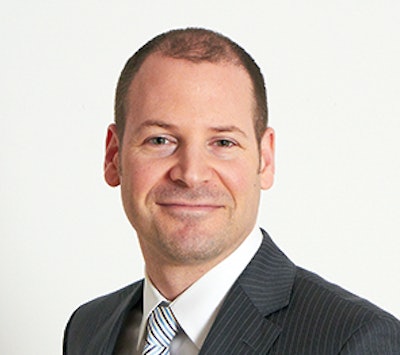
Packaging World:
How much of NWNA’s footprint is related to packaging?
Nelson Switzer:
Packaging now accounts for 41% of Nestlé Waters’ footprint—down from 49% in 2010—as a result of lightweighting our bottles.
I understand that NWNA believes Extended Producer Responsibility is the best strategy to increase recycling rates. Can you explain why?
EPR is one of a variety of tools that can be used to shift responsibility for packaging to the producers of packaged goods and to consumers. Incentives for government and corporations to work together to build out infrastructure is one benefit from this type of legislation. Other benefits include increased awareness of the value of recycling and environmental responsibility. Others have reported a reduction in packaging, higher landfill diversion rates, and a reduction in energy consumption and greenhouse gas emissions.
How is NWNA encouraging the growth and implementation of EPR?
We are currently supporting a variety of programs to continue to incentivize further development of recycling infrastructures and drive us closer to a closed-loop system for packaging. For instance, we have increased greatly the percentage of recycled PET in our bottles. This has created a demand for rPET, helping encourage suppliers to produce the material. This has had a knock-on effect where the demand for post-consumer PET has increased, and recycling programs were encouraged to ensure the supply of high-quality rPET meets Nestlé’s standards for bottling water.
But it’s only one approach. At NWNA, we are also focusing on innovative packaging design, partnership, education, and internal operating efficiency. The solution to closing the loop on packaging will require a multitude of solutions, and EPR is but one of the options that requires further support and investigation.
Many CPGs are concerned about the costs that will be imposed upon them with EPR. How do you respond to this?
There are costs associated with virtually all legislative and voluntary systems for encouraging enhanced recovery of packaging. However, there are a variety of factors that need to be considered when evaluating how cost-effective one system is over another. This might include the scope of the product life cycle and the time horizon over which a return on investment is required, in addition to other environmental and social elements such as the value of greenhouse gas emissions, energy reduction, natural resource preservation, and so on.
We respond to recycling programs and other resource use reduction and recovery programs, such as EPR, by evaluating the net economic, environmental, and social value associated with the program.
Some would argue that the key to increased recycling rates is consumer education/participation. Right now, recycling is widely available for PET, but rates are still very low. How can the industry change consumer habits?
It starts with companies educating themselves on how their packaging is treated and by whom, so they can better understand who and where to target. Next, a company will need to evaluate why their packaging is treated this way to help begin to refine a strategy. For instance, a strategy for encouraging recycling in dense urban areas is very different than in rural areas, where population density makes the development and maintenance of recycling infrastructure more challenging.
No matter what the industry does learn through their research and knowledge gathering, what is most critical is that it works in collaboration with environmental advocates, associations, policymakers, and consumers to change habits. For our company, that involves a mix of activities, including supporting actions that necessitate recycling at the local and regional level.
We must also think short, medium, and long term. For instance, a longer-term solution is reaching out and educating the youngest recyclers. There is no more powerful boardroom table than the breakfast table, and when a child asks his/her parents why they don’t have a blue box for recycling in their house, it has proven to be one of the more compelling motivators for household recycling, which is a proven precursor to office, commercial, and industrial recycling. That is why we support programs like Project WET that teach young people about the value of water stewardship, and how to pass that knowledge on.
Some of NWNA’s competitors in the beverage market are pursuing bioplastics for their packaging. What is NWNA’s view on bioplastics versus recycling and lightweighting of packaging? Does NWNA have any plans to pursue bioplastics?
This is a great question, but it’s not an either-or scenario. There are so many great innovations in development that are contributing to resource use efficiencies, including bioplastics, lightweighting, and other alternatives. It’s about a mix of solutions to the issues.
On that point, NWNA maintains a Packaging Task Force that is charged with identifying and recommending whether we should pursue some of these innovations. And we are also a founding member of the Bioplastic Feedstock Alliance, which is a multi-stakeholder forum focused on increasing awareness of and evaluating different feedstock sources to be used as bioplastics.
Can you describe some of the progress NWNA has made in recent years in reducing the environmental impact of its packaging?
Absolutely. Across the board, we have reduced our plastic content by more than 60% between 1994 and today, by lightweighting our bottles, and we are increasing our use of rPET.
Thanks to our partnership with CarbonLITE, which supplies us with a steady stream of recycled materials, we’ve also been able to increase the rPET content in our Arrowhead brand bottles by 38%, making them 50% recycled content. Our Resource brand is 100% recycled, and all our PET and rPET bottles are recyclable.
We have also decreased our overall material usage by 6%, among other initiatives, removing the cardboard bottoms from our shrink-wrapped products. In California, we have upgraded our processing plants to use less energy. And in Texas, we are looking for alternative fuels to transport materials/products.

























